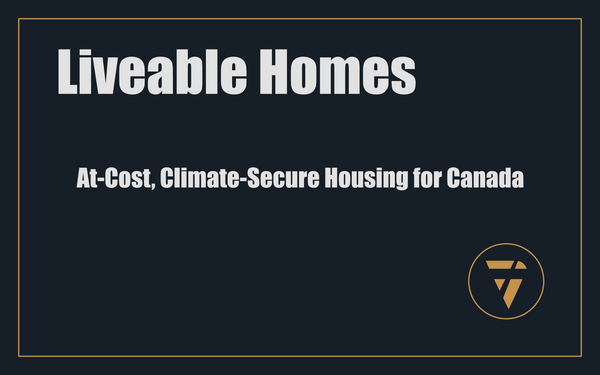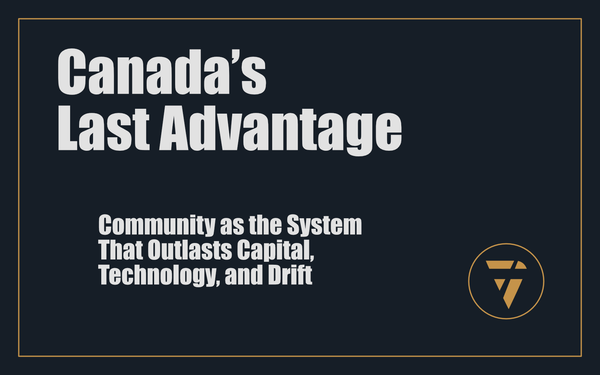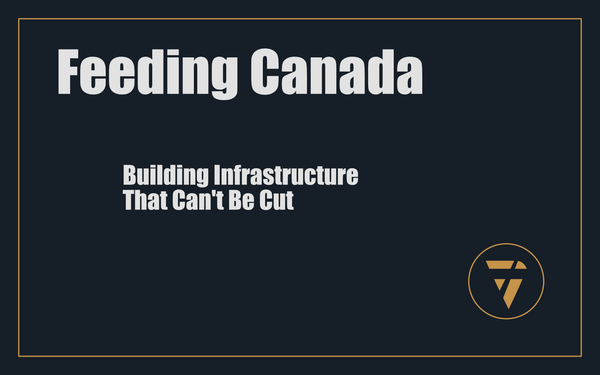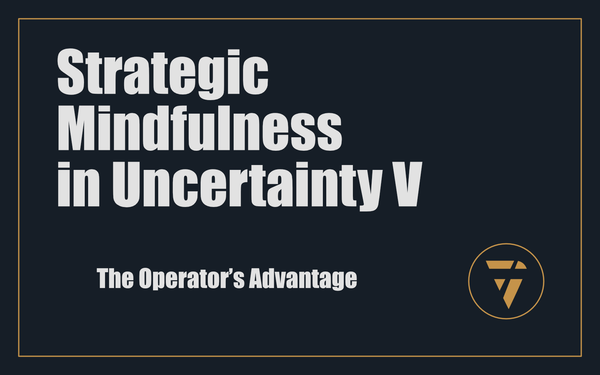Earth–Powered Comfort
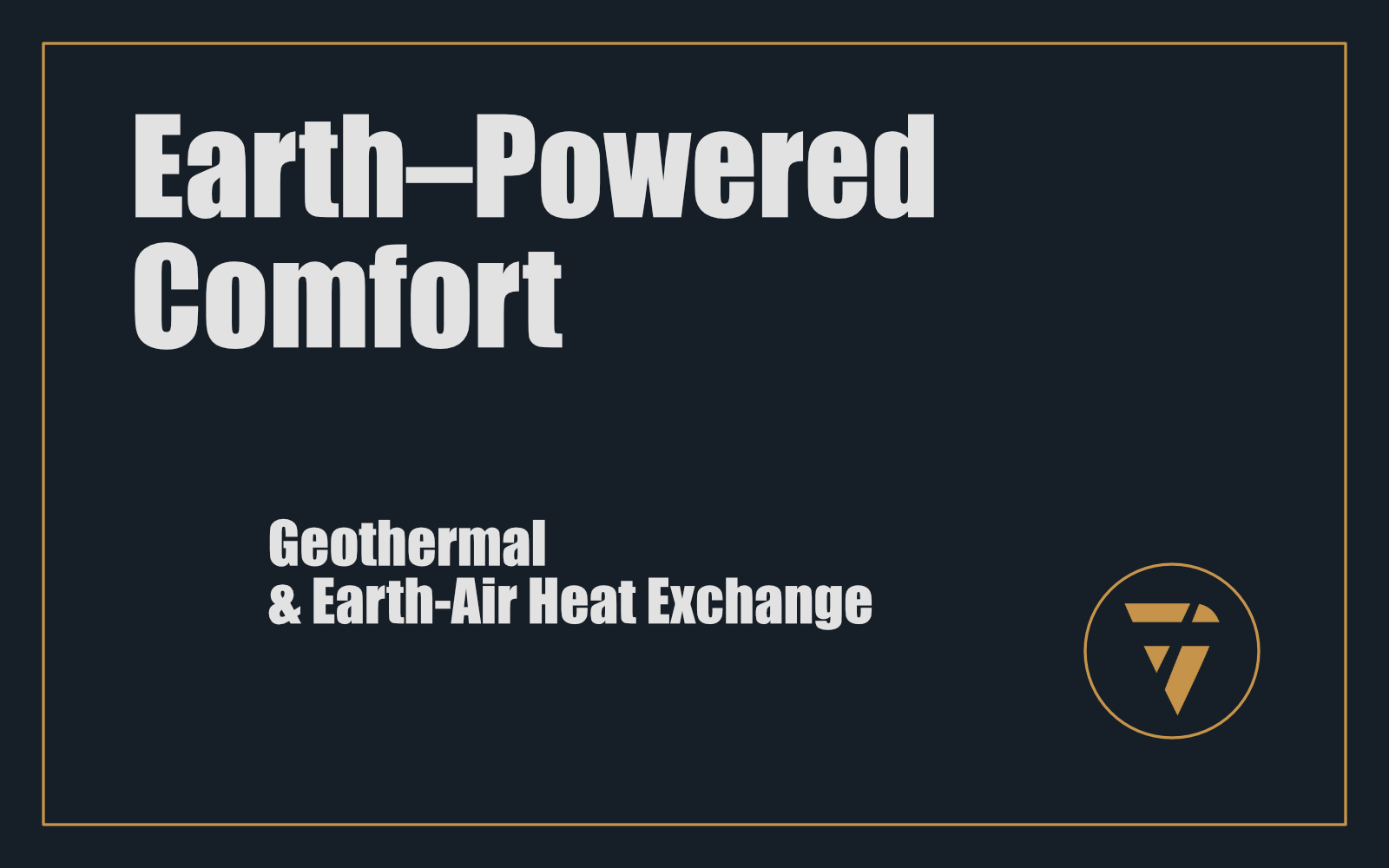
Geothermal & Earth‑Air Heat Exchange
Harnessing the Earth’s steady temperature to light your fire or cool your calm — without burning fuel or draining the grid.
1. The Ground Isn’t Just Dirt — It’s a Climate Regulator
Beneath our feet lies a nearly constant thermal reservoir. A few metres underground, the soil temperature stabilises around the annual average—typically 8 °C to 12 °C in Canada. That’s warm in winter, cool in summer. And we ignore it at our peril.
Ground-Coupled Heat Exchangers (GCHX) use buried pipes to pass air or fluid through this stable layer, exchanging heat with the earth.
- In winter, the ground warms the supply air; in summer, it cools it.
- No combustion. No compressors. No coal, gas, or rare metals. Just the earth.
Ask my Dad about how they built these in the 70's, and then ask him how it's working today :)
2. Earth‑Air Heat Exchangers (EAHE): Air Conditioning that Doesn’t Drink Power
EAHE systems (a type of GCHX) pass outside air through buried pipes, delivering it pre-conditioned to the home’s intake.
- Typical performance:
- Summer: 5 °C cooling
- Winter: 2 °C pre-heating
- Depth, length, airflow, and soil type matter most. Sandy soils offer slightly better heat exchange
- Modeled systems show savings in annual heating/cooling vs hybrid systems
Economical, silent, passive — and deadly efficient.
3. Geothermal Heat Pumps: Taking It to the Next Depth
With geothermal (ground-source) heat pumps, we use the same buried loops—but add a compressor to achieve amplification.
- COP (heating ratio): 3–5
- EER (cooling ratio): ~15–30
- EPA data shows:
- 30–70% heating savings
- 20–50% cooling savings vs conventional HVAC
It's worth noting: heat pumps need electricity to operate. But the electricity demand is far lower than traditional systems—making it a massive gain in resilience.
4. Performance & Economics: Not Just a Feeling
EAHE systems
- Easily integrated into passive survivability models
- Savings: 10–15% HVAC load reduction
Geothermal heat pumps
- Cost: $20,000–$35,000 installed in Canada
- Savings: 50–70% on energy bills
- Incentives in Canada: up to $5,000 rebate
- Lifetime: 25+ years
All while dramatically increasing resiliency during outages—especially when paired with passive survivability.
5. Ground vs Air: Choosing What Suits Your Site
| System | Best Locations | Complexity | Resilience Benefit |
|---|---|---|---|
| EAHE | Rural, sandy soils | Low | Pre-conditioning, passive buffering |
| Geothermal HP | Either context | Medium-high | Active heating/cooling amplification |
| Solar + GCHX hybrid | Sunny, thermally-inert soil | Medium | Boosted performance, redundancy |
Steady soil temperatures mean both options deliver strong resilience and savings.
6. Community-Scale
At scale, this demonstrates EAHE paired with passive shell retrofits for affordable housing. The result?
- Cooler homes
- Lower bills
- Reduced heat-related health incidents
These are not isolated experiments. They’re scalable, replicable, and replicative of The Table’s ethos: Earth as infrastructure.
7. Soil Matters — So Does Design
Arid, sandy soil improves exchange efficiency (+10–20%) compared to clay.
Effective EAHE design includes:
- Depth: 1.5–3 m
- Length: 30–50 m per bedroom
- Diameter: 10–15 cm pipes
- Airflow: 5–10 L/s per person
Geothermal loops require professional design, but performance metrics are consistent.
8. Resilience Amplified
During a blackout:
- EAHE systems passively deliver air at ~ground temperature—cool enough to delay heat build-up for hours, even days.
- Paired with passive survivability shells, you’re not baking.
- Add a small solar-battery-powered fan, and you’re fully independent.
Earth-based systems buy you time, drop temperatures, and provide peace — hardly a luxury. It's essential lifeline.
9. What Must Change
- Every new build: EAHE baseline; GSHP optional but pressing for new communities
- Financing/development policy: EAHE included in cost modelling; GSHP eligible for green bonds
- Regulation: EAHE and GSHP that deliver >50% HVAC load savings as a code minimum for resiliency zones
When life depends on zero-power comfort, dirt-based systems must be standard, not subsidy.
Final Word
You cannot claim climate security with walls and fan coils alone.
To survive.
to thrive.
you must build with the Earth as an ally.
Ground-powered comfort is more than innovation—it’s integrity.
This is what I’m working on. Tell me what you think, I enjoy the conversation! Subscribe and follow the work in real time.
Thanks!
B

If your heat dies when the grid does—your house isn’t safe.
Earth-air tubes. Ground loops. Passive shells.
The planet has the power to heat and cool you for free.
You just have to stop fighting physics—and start designing with it.
PS -



